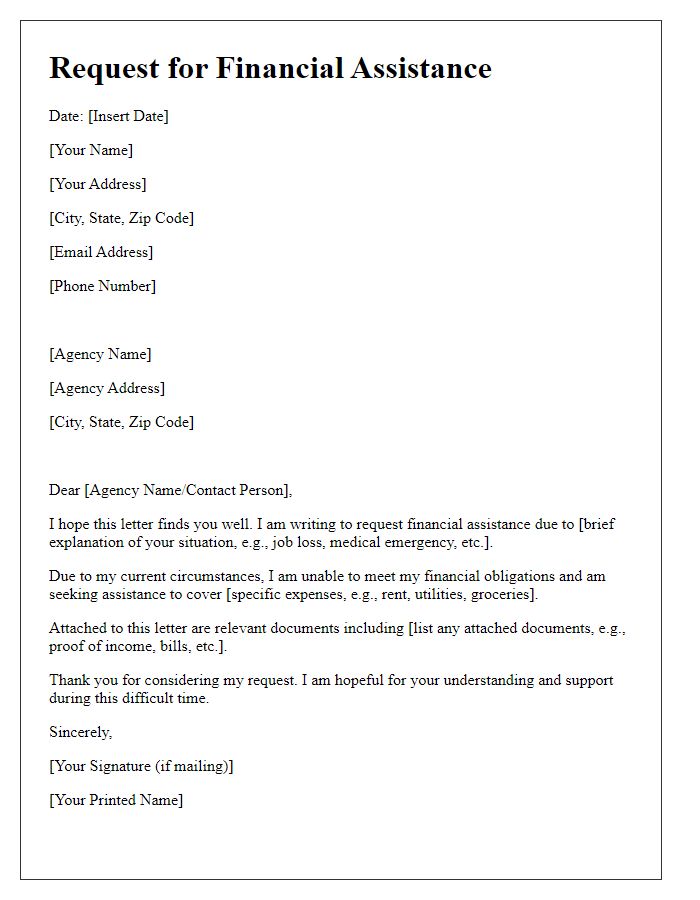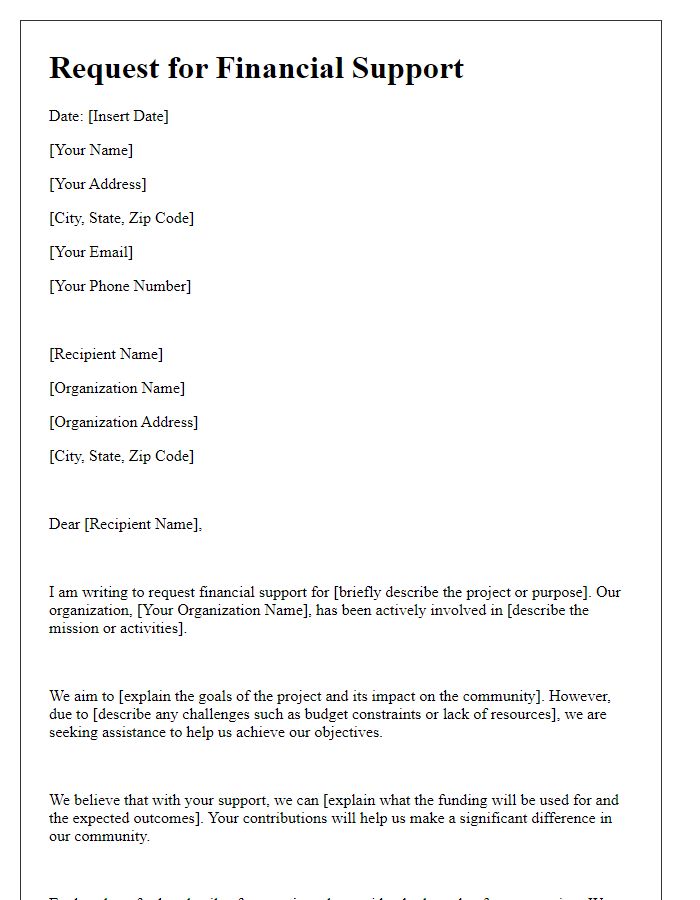Are you in need of financial assistance but unsure how to craft a compelling request? Navigating the intricacies of a financial aid request can feel overwhelming, but with the right guidance, you can express your needs clearly and effectively. This article will provide you with a straightforward letter template tailored for social service agencies, ensuring that your request stands out and resonates with the reader. Ready to take the next step? Read on to discover valuable tips and a customizable letter template!

Recipient Information
The financial aid request process at social service agencies is essential for individuals seeking assistance. Applicants typically provide personal details, including full name, residential address, and contact number, to ensure effective communication. Date of birth details are crucial, as age eligibility can affect aid qualification. Social security number may be required for identity verification and financial background review. Employment status plays a significant role in determining financial need, with information on current job title, employer name, and income level considered. Additionally, details about household composition, including the number of dependents and their ages, help assess the overall financial situation. Accurate documentation and clarity in this initial section are key to a successful application process.
Purpose of Request
Financial aid requests in social service agencies often stem from critical situations requiring immediate assistance. Individuals or families facing hardships due to medical emergencies, job loss, or unexpected home repairs may seek financial support. These requests typically highlight specific needs, such as rent or utility payments, ensuring that applicants provide details like amounts owed, due dates, and past payment history. Supporting documentation, including pay stubs, medical bills, or eviction notices, strengthens the case for assistance. While ensuring accountability, the agency aims to alleviate financial stress, enabling recipients to regain stability and pursue long-term solutions.
Detailed Financial Situation
Many individuals encounter financial strain due to unforeseen circumstances, such as medical bills or job loss. In 2022, approximately 37 million Americans lived below the poverty line, highlighting the urgent need for assistance among vulnerable populations. Financial assistance programs, like those offered by social service agencies, aim to alleviate burdens caused by housing costs, medical expenses, and food insecurity. For instance, in California, the average household spent about $1,300 monthly on housing, making it challenging for families without stable income sources. Additionally, rising healthcare costs, which increased by 4.6% in 2021 alone, put further pressure on already strained budgets. As a result, individuals often seek aid in desperate times to cover basic needs, ensuring stability and promoting overall well-being.
Specific Aid Amount Needed
Financial aid requests from social service agencies often require a detailed analysis of specific funding needs for effective support. For example, a request might specify a need for $2,500 to cover emergency housing for families experiencing homelessness in a municipality like Springfield. This funding could provide temporary shelter at local establishments such as the Hope Shelter, which serves 150 clients monthly. Additionally, funds would facilitate essential amenities like meals, hygiene kits, and case management services essential for long-term stability. A clearly articulated financial request enhances visibility for pressing community needs and fosters strategic allocation of resources.
Contact Information and Follow-up Plan
Contact information for social service agencies is essential when requesting financial aid. Full name of the applicant, clearly stated, helps streamline communication. Address, including city and ZIP code, ensures correspondence reaches the correct location. Phone number provides a direct line for updates or requests for additional information. Email address enables rapid, documented communication. Follow-up plan should include specific dates for follow-up correspondence, such as two weeks post-application submission. Documenting previous interactions with the agency establishes a clear timeline and enhances the overall process. A professional tone is crucial throughout to underline the seriousness of the aid request.
Letter Template For Social Service Agency Financial Aid Request Samples
Letter template of financial assistance request for social service agency

Letter template of support request for funding from social service program

Letter template of request for financial support from community service organization

Letter template of funding plea for assistance from social welfare agency

Letter template of grant application for financial help from social service entities

Letter template of financial aid inquiry to local social service providers

Letter template of request for urgent assistance from social support services

Letter template of appeal for monetary aid from non-profit social service agency






Comments